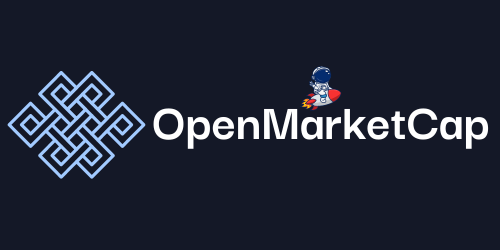Imagine standing at a bustling crossroads, each path leading to a different world of possibilities. That’s what it feels like diving into the realm of smart contract chains. With so many options out there, how do we choose the right one for our projects? Each chain brings its own flavor, from speed and scalability to security and user-friendliness.
As we explore the nuances of these platforms, we’ll uncover not just their features but also the unique advantages they offer. Whether you’re a developer looking for efficiency or a business seeking reliability, understanding these differences can make all the difference. Let’s embark on this journey together and discover which smart contract chain might just be the perfect fit for us.
Overview of Smart Contract Chains
Smart contract chains are blockchain networks designed specifically for deploying and executing smart contracts. These networks streamline processes and provide automation in various applications, including finance, supply chain management, and gaming. Each chain offers unique features, impacting performance, speed, and usability.
We see numerous smart contract chains today, with some of the most notable being Ethereum, Binance Smart Chain, and Solana. Ethereum is a pioneering platform with a robust developer ecosystem, boasting over 3,000 active projects. Its security and network effect make it a leading choice. In contrast, Binance Smart Chain emphasizes lower transaction costs and faster confirmation times, attracting a diverse range of decentralized applications (dApps). Solana stands out for its high throughput, handling over 65,000 transactions per second, catering to applications that demand speed.
When selecting a smart contract chain, we consider factors like transaction speed, scalability, security, and developer support. Developers, for instance, gravitate toward chains that offer extensive documentation and tools, while businesses often prioritize chains that provide reliability and compliance with regulations.
Smart contract chains also exhibit various consensus mechanisms. Ethereum uses Proof of Stake (PoS), ensuring energy efficiency and enhanced security. Binance Smart Chain employs a unique consensus called Proof of Staked Authority (PoSA), combining the speed of a centralized model with the decentralization of blockchain. Solana utilizes a groundbreaking Proof of History (PoH) combined with PoS, enabling swift transaction validation and enhancing scalability.
Summarizing, understanding smart contract chains requires an analysis of individual features. Each chain supports specific use cases and target audiences, making it critical for projects to align with the most suitable option. We invite you to investigate further into each platform’s nuances to make informed decisions for your smart contract endeavors.
Key Features of Smart Contract Chains
Smart contract chains offer a variety of features that cater to different needs in the blockchain ecosystem. These elements play a crucial role in how we choose the right chain for our projects. Let’s jump into the specifics, focusing on scalability, security, and interoperability.
Scalability
Scalability is the backbone of any smart contract chain, determining how many transactions can be processed simultaneously. Ethereum, while groundbreaking, faces scalability challenges due to its popularity. The introduction of solutions like sharding and zk-SNARKs aims to enhance its performance, but progress remains ongoing. On the other hand, Hyperledger Fabric is tailored for businesses, providing a private, permissioned environment that allows for improved scalability compared to public blockchains. Newer platforms such as Polkadot, Cosmos, and Solana prioritize scalability, boasting higher transaction throughput and reduced latency. For example, Solana can process over 65,000 transactions per second, showcasing its robust capability to handle large-scale applications without breaking a sweat.
Security
Security forms the foundation of trust in any blockchain platform. Ethereum’s extensive network of nodes enhances its security, proving difficult to alter protocol rules or create invalid blocks. In contrast, Hyperledger Fabric’s structure ensures greater security for enterprise applications. By operating in a private and permissioned setting, Fabric compromises a bit on decentralization but strengthens security measures that are crucial for sensitive data. This makes it an excellent choice for sectors like finance and healthcare, where data integrity matters significantly.
Interoperability
Interoperability allows different blockchain networks to communicate with each other, which is essential in a fragmented landscape. Many newer platforms, like Polkadot, help interactions between various chains, enabling seamless asset transfers and data exchanges. This capability promotes efficiency and opens doors for more complex decentralized applications that can leverage multiple chains simultaneously. Ethereum continues to explore compatibility with Layer 2 solutions, enhancing its ecosystem’s versatility. By considering interoperability, we can design projects that are not only robust in isolation but also collaborative on a broader scale.
Exploring these key features has shaped our approach to selecting smart contract chains, emphasizing the importance of each element in creating effective and secure decentralized applications. Prioritizing scalability, security, and interoperability enhances our project’s potential and ensures we’re aligned with our goals.
Popular Smart Contract Chains
We’ll explore some popular smart contract chains, focusing on their unique attributes and functionalities. Understanding these chains helps us navigate the evolving landscape of blockchain technology.
Ethereum
Ethereum stands out as a foundational platform in the smart contract space. This decentralized, open network operates without a central authority, making it a pioneer in the blockchain realm. Ethereum utilizes a Proof of Stake (PoS) consensus algorithm, enhancing its security and energy efficiency. Developers predominantly use programming languages like Solidity and Vyper to build applications on Ethereum.
Ethereum’s strengths lie in its well-established ecosystem. The platform supports a vast range of decentralized applications (dApps), providing users with diverse functionalities. But, scalability issues can hinder transaction processing speeds, especially during peak times. As our projects grow, this factor becomes increasingly important.
Binance Smart Chain
Binance Smart Chain (BSC) offers a vibrant community-driven experience. It provides a decentralized platform that’s compatible with the Ethereum Virtual Machine (EVM), making it easier for developers to migrate or create applications. Using a dual consensus mechanism that combines Proof of Stake (PoS) and Proof of Authority (PoA), BSC maintains efficiency while ensuring high transaction throughput.
BSC is renowned for its fast transaction processing and low fees, attracting many developers and gamers alike. These features make it an appealing choice for projects requiring speed without sacrificing security. As we investigate into our development choices, BSC can prove to be a game-changer.
Cardano
Cardano offers a unique approach to smart contracts with its focus on security and sustainability. Utilizing a Proof of Stake consensus mechanism called Ouroboros, Cardano emphasizes a research-driven philosophy, ensuring that every upgrade is rigorously tested before implementation. The platform supports programming languages like Plutus and Marlowe, which provide distinct capabilities for development.
Cardano’s strengths include its emphasis on peer-reviewed research and prioritization of scalability. But, its slower rollout of features may challenge some developers looking for immediate solutions. Exploring Cardano ensures we remain informed about innovative developments in the blockchain space.
Solana
Solana represents a new wave of smart contract chains, focusing on high transaction speeds and scalability. With a unique Proof of History (PoH) consensus mechanism, Solana processes thousands of transactions per second. This feature is particularly appealing for applications that require real-time transactions, such as decentralized finance (DeFi) platforms and NFTs.
The platform supports multiple programming languages, catering to a diverse range of developers. Solana’s rapid growth and lower fees make it an attractive option for many projects. As we consider our options, engaging with Solana’s ecosystem proves beneficial for high-demand applications.
We explore each of these platforms to gauge which aligns with our project goals. Each smart contract chain offers distinct features that cater to specific needs, shaping our decision-making process.
Advantages and Disadvantages
When selecting a smart contract chain, understanding the advantages and disadvantages guide our decision-making process. Each platform offers different features, ranging from speed to usability.
Advantages of Different Chains
- Ethereum: We appreciate Ethereum’s flexibility. It supports complex decentralized applications (DApps) by offering an individualized data store for each account. This allows transactions to interact seamlessly with smart contracts, altering the blockchain state effectively. Its widespread adoption and robust developer community make it easier for us to find resources and support when we need it.
- Binance Smart Chain (BSC): BSC stands out because of its fast transaction processing speeds. We often see it being selected by gamers and developers looking for a cost-effective platform. Low transaction fees also make it attractive for various applications, enhancing user experience.
- Cardano: Cardano prioritizes security and sustainability. Its research-driven approach gives us peace of mind among many projects. This unique focus on academic rigor attracts developers who appreciate a platform built on sound principles.
- Solana: Solana impresses us with its high transaction speeds and scalability. For real-time applications, its architecture supports a large volume of transactions per second, ideal for applications that demand immediate responsiveness.
- Ethereum: Even though its strengths, Ethereum does face scalability challenges. During peak times, we notice slow transaction speeds and high fees, which can frustrate users and developers alike.
- Binance Smart Chain (BSC): While BSC’s speed is commendable, its centralization raises concerns. The reliance on a limited number of validators may pose risks for those who prioritize decentralization.
- Cardano: Cardano’s recent emergence means it lacks the extensive DApp ecosystem seen in more established chains like Ethereum. As we compare options, this can limit choices for developers seeking rich resources.
- Solana: Solana’s rapid growth does come with trade-offs. Some users report network outages and performance issues under high demand, challenging stability for critical applications.
Navigating these advantages and disadvantages allows us to align our project goals with the features each smart contract chain offers, ensuring informed decisions in blockchain technology.
Future Trends in Smart Contract Chains
The future of smart contract chains presents exciting possibilities, driven by technological advancements and evolving user needs. Each chain seeks to address current limitations while pushing boundaries in areas like security, scalability, and developer accessibility.
EVM Chains are set to enhance compatibility and collaboration. As more projects adopt EVM technology, tools like Solidity will evolve, fostering a more robust developer ecosystem. We can expect increased focus on optimization languages like Yul, which will help reduce gas fees, making smart contract deployment easier and cheaper.
Non-EVM Chains are gaining traction due to their unique advantages. Languages like Rust are poised to dominate non-EVM environments. Their focus on performance and security stands to reshape how developers create efficient and secure applications on chains like Polkadot and Solana. Growth in interoperability between EVM and non-EVM chains could lead to hybrid solutions that maximize both ecosystems’ strengths.
Next, trends around Layer 2 solutions, such as rollups, are becoming crucial for addressing scalability challenges. By facilitating off-chain processing, these solutions can ease congestion on primary networks. With Ethereum and others exploring these options, we could witness a significant shift in transaction speeds and cost efficiency.
Finally, the rise of decentralized finance (DeFi) and non-fungible tokens (NFTs) will amplify the demand for innovative smart contract functionalities. As user expectations grow for fast, secure, and tailor-made solutions, smart contract chains will likely evolve rapidly to meet these demands.
Summarizing, exploring these future trends reveals a dynamic landscape for smart contract chains. The convergence of EVM and non-EVM technologies, alongside Layer 2 advancements, will create new opportunities for developers and users alike, shaping the blockchain environment as we move forward.
Conclusion
Choosing the right smart contract chain is crucial for anyone diving into the blockchain world. With so many options out there each with its own unique strengths and weaknesses it’s all about finding the one that fits our needs best.
As we look ahead the landscape is only going to get more exciting. Innovations in technology will open up new doors for developers and users alike. We’re in for a ride as these chains continue to evolve and shape the future of decentralized applications. Let’s stay curious and keep exploring this dynamic space together.

